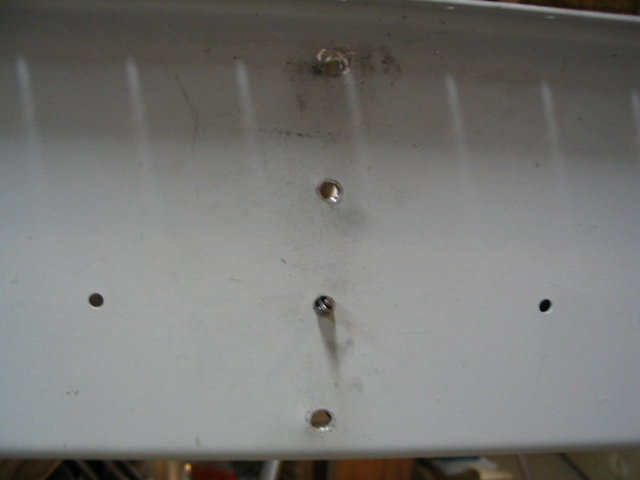DaleB
Well Known Member
I bought my -7A with the empennage mostly complete, so I get to make my newbie mistakes on the wing. How exciting!
When I riveted the wing ribs to the rear spar, I had the skeleton on the wing stand. Big mistake. I couldn't see the bucking bar and a lot of rivets ended up way over-driven, plus some of the rib flanges weren't tight against the rear spar. The end result was a fair number of drilled-out rivets. I quickly figured out to do this sort of thing on the workbench from now on.
Most of them came out OK, and I bought a pneumatic squeezer that is turning out to be a FAR better solution for this. However, there is one place that I screwed it up pretty well. Fortunately it's the #13 rib -- naturally -- the last one before the wing tip. I ended up elongating the top and bottom holes of the rib and rear spar. A -4 rivet is not going to work in either of those holes.
I can think of two options to fix this:
What would y'all recommend?

When I riveted the wing ribs to the rear spar, I had the skeleton on the wing stand. Big mistake. I couldn't see the bucking bar and a lot of rivets ended up way over-driven, plus some of the rib flanges weren't tight against the rear spar. The end result was a fair number of drilled-out rivets. I quickly figured out to do this sort of thing on the workbench from now on.
Most of them came out OK, and I bought a pneumatic squeezer that is turning out to be a FAR better solution for this. However, there is one place that I screwed it up pretty well. Fortunately it's the #13 rib -- naturally -- the last one before the wing tip. I ended up elongating the top and bottom holes of the rib and rear spar. A -4 rivet is not going to work in either of those holes.
I can think of two options to fix this:
- I believe I could re-drill the holes for a couple of -5 rivets.
- I could also make a doubler plate to span all four rivets, and extend up the rib web where I'd set four more through the rib web and doubler plate. Then I would need to make two doublers for the other side of the rear spar -- I can't just use one because of W-724 that intersects that line of rivets. I'd need to put rivets on either side of the original holes.
What would y'all recommend?

Last edited:




